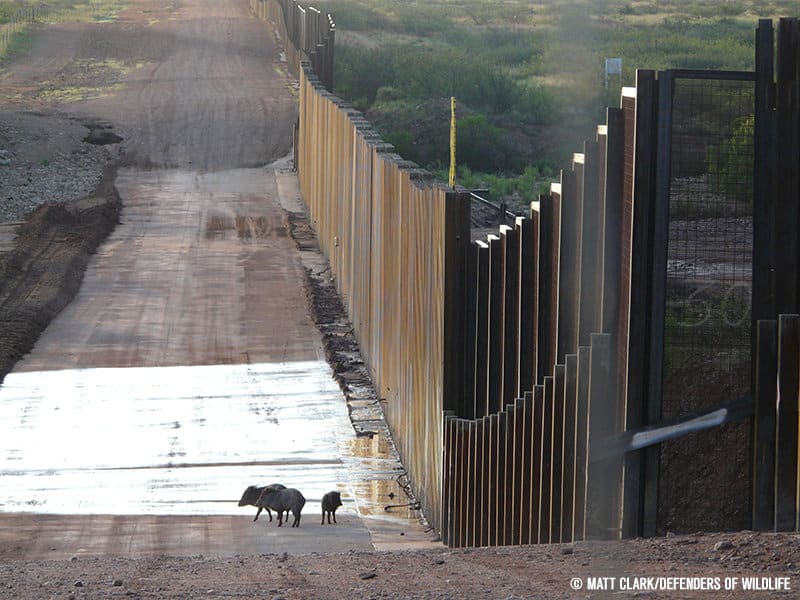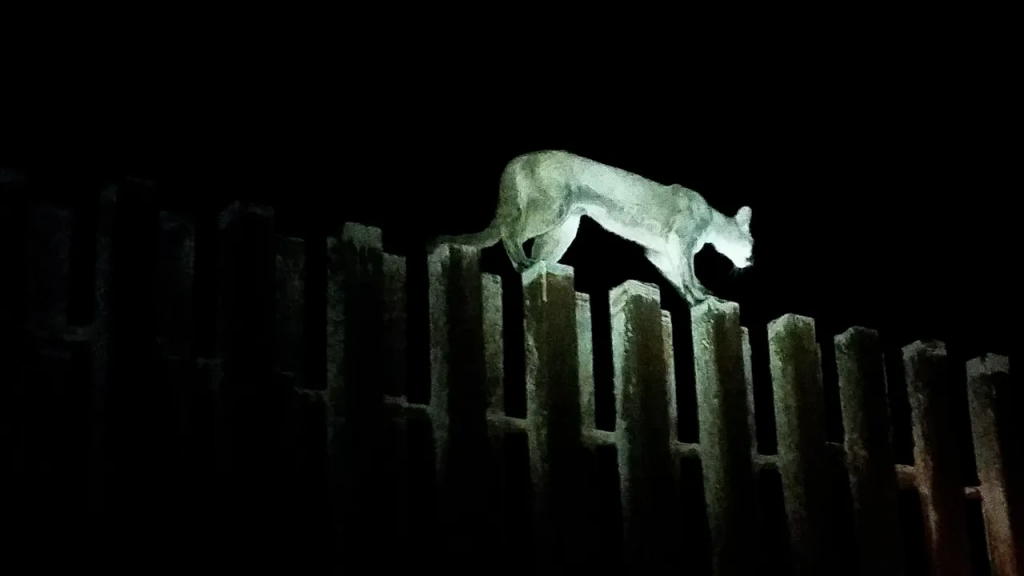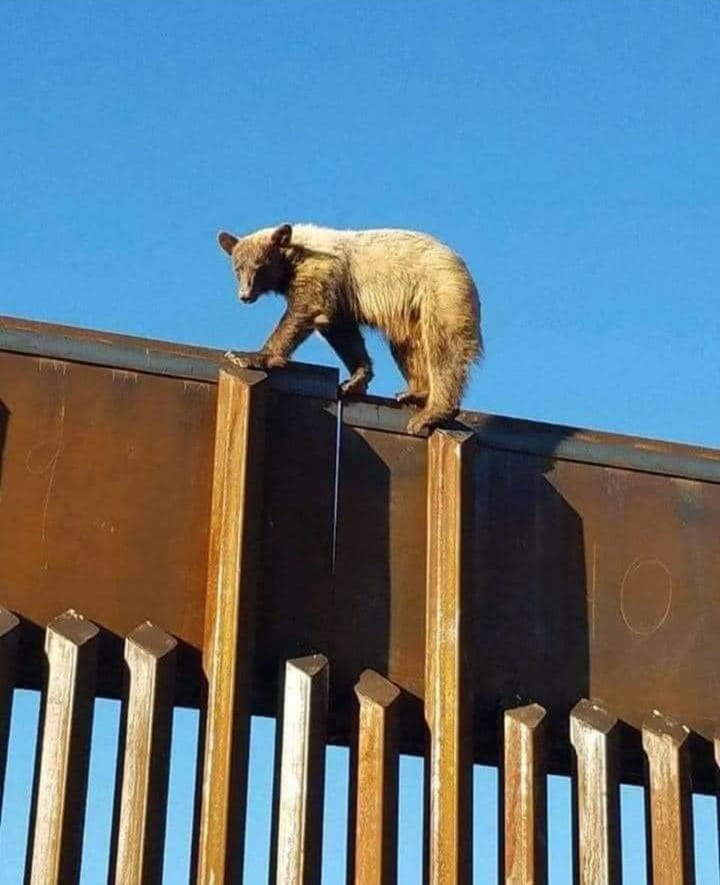International border barriers everywhere are harming wildlife by bisecting their habitats, disrupting their hunting and collecting patterns and preventing them from commingling. In some cases, the borders are causing so much harm that they could cause certain species to go extinct.
That’s according to a new study published in the journal Biological Conservation led by Cole Sennett, a recent NAU master’s graduate in forestry, and Carol Chambers, a professor in the School of Forestry. The literature review, which analyzed 42 studies on wildlife and borders by scientists across the globe, was part of a special issue on addressing land degradation.
“With border barriers, the habitat that animals once moved freely across is divided, fragmenting populations, reducing availability to water, lowering gene flow and even killing animals that try to cross,” Chambers said. “Animals don’t recognize political boundaries—they are tied to the resources that they need to survive. It’s hard seeing animals come up against a new barrier—a huge wall or fence—that stops their ability to get a drink of water or find seasonal foods, especially in desert environments.”

Chambers pointed out that the problem has become worse due to a dramatic increase in border barriers in the 21st century. According to a report from the Migration Policy Institute there were just two dozen border walls across the world in 2000; two decades later, that number has tripled. The U.S.-Mexico border has become the 10th longest border wall in the world at almost 2,000 miles long.
“If we keep building and maintaining borders the way we are now, it means that our grandkids or great-grandkids might not be able to see a jaguar in southern Arizona ever again,” Sennett said. “As an avid hunter and conservationist, my hope is that this research inspires countries to find a way to keep their borders secure while making sure wildlife aren’t harmed.”
Sennett said that after reviewing dozens of studies, he and Chambers found three main ways in which physical borders were harming wildlife:
- Habitat fragmentation. Borders can cut animals off from their natural ranges, and that is especially dangerous for animals with a very small travel radius, such as reptiles and some birds. Imagine a lizard who only travels up to a quarter mile from home, Sennett said. Then, imagine a fence going up in the middle of that lizard’s already tiny range, restricting its stomping grounds—and potential food supply—even more. And don’t forget that border infrastructure like bright lights, non-native landscaping, roads and increased staff will further hamper that lizard’s ability to hunt, forage and even reproduce.
- Less genetic variation. International borders can disrupt animals’ ability to interact and breed with each other. That means that over time, they become less genetically diverse, leading to a decrease in immunity to certain diseases. With time, they may even become inbred and unable to reproduce.
- Fewer safety nets. Some endangered species are legally protected in one country but illegally poached in another. Without international cooperation on wildlife conservation, lax hunting laws and enforcement will continue to hurt animals who exist on both sides of a border fence.

That’s not to say borders don’t also benefit wildlife in some ways, Sennett pointed out. Even in places where animals are threatened by poaching on one side of a border fence, they’re shielded from it on the other—guaranteeing they won’t go completely extinct. Borders can also shield animals from disease: In Mexico, for example, bighorn sheep are prone to pneumonia and parasites, but thanks to an impassable border fence cutting through the Sonoran Desert, bighorn sheep in the United States are largely unaffected.
“So, the question is,” Sennett said, “how do you keep the positives of border fences and toss the negatives?”
The literature review gave Sennett and Chambers some ideas. Here’s how they think physical borders can maintain national security while also minimizing harm to wildlife:
- Cut down on lights and noise. Many international border areas were dark, quiet and uninhabited before fences and walls were installed. That means the animals who live there haven’t grown accustomed to navigating light-flooded, noise-polluted environments full of human activity. Dimming lights and restricting the hours in which noisy construction can take place would go a long way toward supporting wildlife in those areas.
- Let animals pass. What if border walls carved out passageways for small animals? What if border security workers opened temporary gaps in the fence a few times every migratory season? Taking these occasional measures would help lessen the disruption some species have experienced with the construction of border walls.
- Use different materials. A coiled, sharp material called concertina wire tops many border fences to discourage people from climbing over. One study found that for some species, concertina wire was responsible for one to two deaths per mile per year along about 600 miles of the U.S.-Mexico border, a perilously high mortality rate. Constructing fences with a different type of wire could save thousands of animals’ lives every year.
- Increase binational cooperation. To ensure a better future for some of the world’s most beloved species, government leaders and scientists on both sides of every border barrier should work together to arrive at common security and preservation goals.
Sennett said he hopes researchers can conduct a similar literature review in five to 10 years, since conservation laws, political leadership and international borders are always in flux. It’s the only way to measure progress—or lack thereof.
“Borders have had an incredibly negative effect on species like bighorn sheep and mountain lions, even in the last 15 or 20 years,” he said. “Things change fast, and it’s the biologists’ job to make the world aware when big changes threaten animals that play an important role in our lives.”
Jill Kimball | NAU Communications
(928) 523-2282 | jill.kimball@nau.edu




